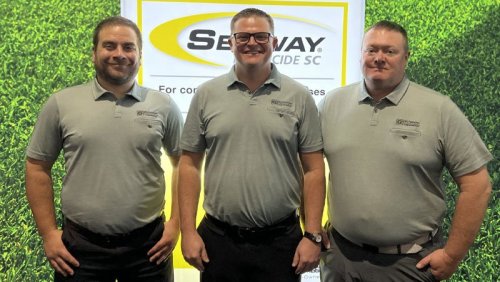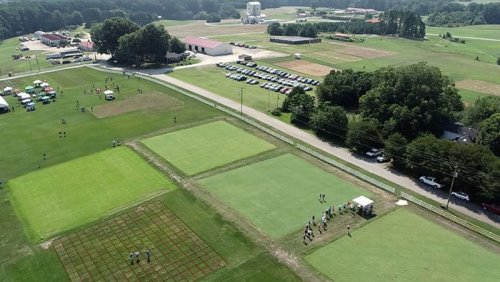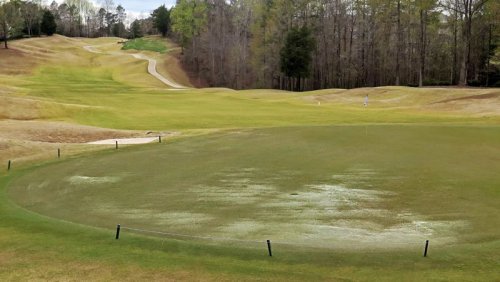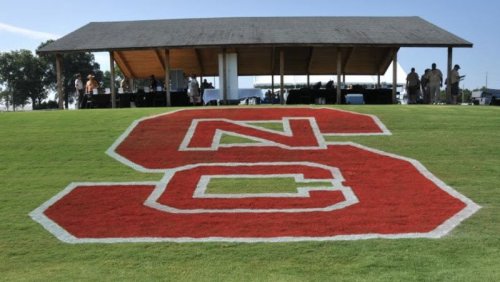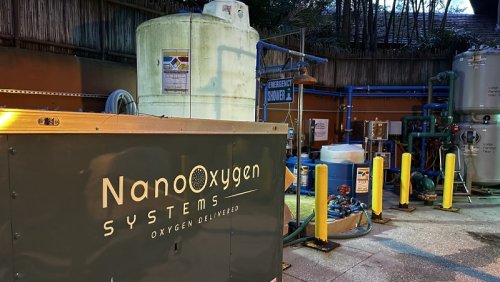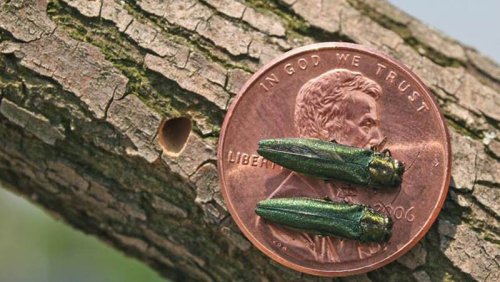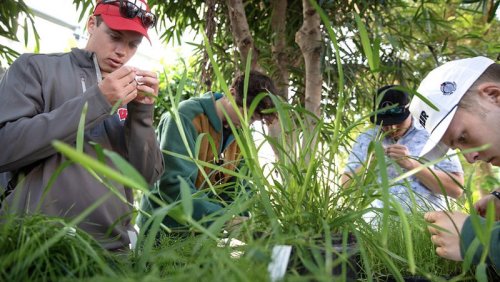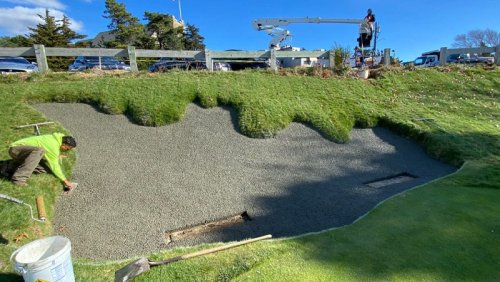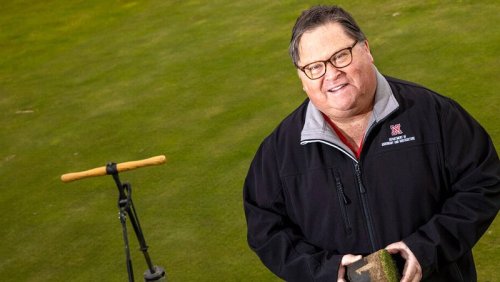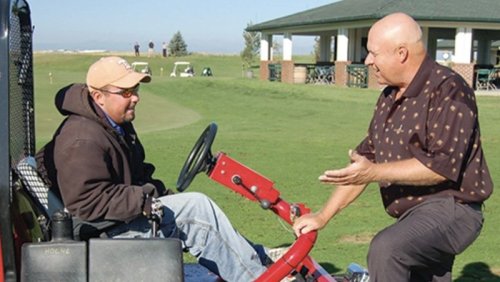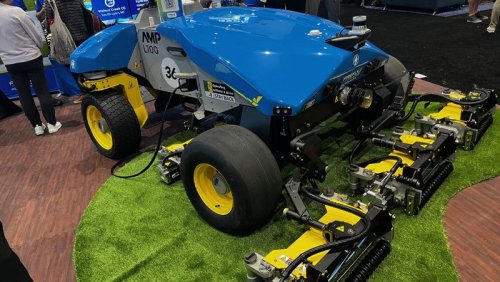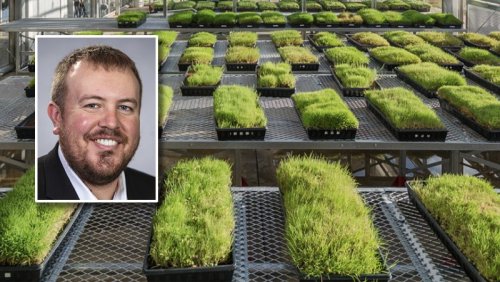
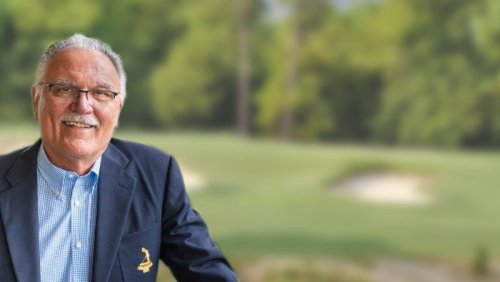
As a result of his contributions to the game of golf and the turf management profession, Farren, who is director of golf course management at Pinehurst Resort, has been named the recipient of the Carolinas Golf Course Superintendents Association Distinguished Service Award.
Farren oversees agronomic conditions for all of Pinehurst's nine golf courses, as well as a par 3 course and 43,000-square-foot putting course.
The award is the Carolina GCSA's highest honor and is presented annually by the 1,850-member association. Farren will accept the award in November at the Carolinas GCSA Conference and Trade Show in Myrtle Beach.
News of the award came as a surprise to Farren, when it was announced before about 200 industry colleagues at the recent Southeast Region Conference at Pinehurst.
"Bob Farren has been a beacon for our profession for longer than many of our members have been alive," said Carolinas GCSA president Alex Tolbert of Orangeburg (SC) Country Club. "For decades, he has been a leader, at his facility, across our region, and on the national stage. We all walk a little taller in our roles because of his efforts and his example."
Farren officially began his career in golf course maintenance in 1979. He joined Pinehurst three years later and led the Carolinas GCSA as president in 1995. He has been a key figure in restoring Pinehurst's standing in the game, and since he arrived at the resort in 1982, its famed No. 2 course has been the site of the U.S. Open in 1999, 2004, 2014 and 2024.
Designated a U.S. Open "anchor site" by the USGA, Pinehurst No. 2 will be the host site of the tournament again in 2029, 2035, 2041 and 2047. The U.S. Women's Open was held at Pinehurst in 2014 and will return there in 2029.
A native of Tornado, West Virginia, Farren grew up on the local golf course where his father worked. He is a graduate of Marshall University, where he studied hospitality.
In his time at Pinehurst, he has been a regular speaker at industry events, and for most of the past 20 years has been active in networking and education events for assistant superintendents like the Green Start Academy. He credits his mother, who was a teacher, for helping foster the educator in him.
"I get a sense that it's part of my mother's love of school-teaching and education," Farren told TurfNet in 2018. "And certainly the tutelage I had growing up and realizing the value and importance of having a mentor."
Bob Farren, CGCS at Pinehurst Resort, will add the Carolinas GCSA Distinguished Service Award to his lengthy list of accolades. Farren also has overseen tremendous growth at Pinehurst as well as a return to the facility's rustic golf roots that includes a restoration of the Donald Ross-designed No. 2 course in advance of the U.S. Open and Women's Open played in concurrent weeks in 2014.
That restoration, led by the design team of Ben Crenshaw and Bill Coore, included converting more than 40 acres of irrigated turf to native grasses, regrassing greens with heat- and drought-tolerant Champion Bermudagrass, eliminating overseeding throughout the property and bringing back a vintage appearance that more resembles what No. 2 looked like when Ross built it in 1907.
Farren was inducted into the Carolinas Golf Association Hall of Fame in 2019 and was named the winner of the USGA Green Section Award in 2024.
Previous recipients of the Carolinas GCSA Distinguished Service Award are: 2023 — Fred Yelverton, Ph.D.; 2022 — Danny Allen; 2021 — Rick Brandenburg, Ph.D.; 2019 — Steve Smith; 2019 — Wayne Smith, Jr.; 2018 — Bert McCarty, Ph.D.; 2017 — Will Holroyd; 2016 — Turner Revels; 2015 — Steve Sheets; 2014 — Michael Fabrizio, CGCS; 2013 — George Fisher; 2012 — Fred Meda; 2011 — Chuck Borman; 2010 — S. Bruce Martin, Ph.D.; 2009 — Patrick O'Brien; 2008 — William D. Anderson, CGCS; 2007 — Dr. Leon Lucas; 2006 — Randy Allen, CGCS; 2005 — Bob Bell; 2003 — Alton "Butch" Sheffield, CGCS; 2002 — James E. "Ernie" Hayes; 2001 — Palmer Maples Jr., CGSC; 2000 — George Thompson, CGCS; 1998 — Landon Miller, Ph.D.*; 1997 — Ed Ancherico; 1996 — Dr. Paul "Doc" Alexander; 1995 — James G. "Whitie" Wright*; 1994 — Wayne B. Smith, Sr.*; 1994 — Dr. Bill Gilbert*; 1993 — Dr. Carl Blake; 1993 — Charles P. Willimon, Sr.*; 1992 — Stanley Boarski, CGCS*; 1992 — Jim Spencer*; 1992 — Bob Hamrick*; 1992 — Bill Sutton*
* Deceased
- Read more...
- 1,255 views

